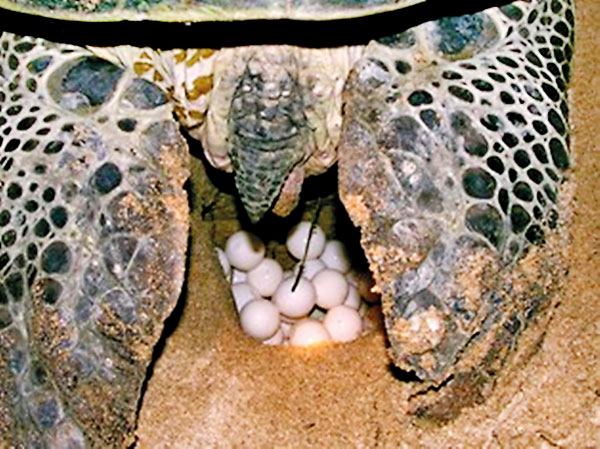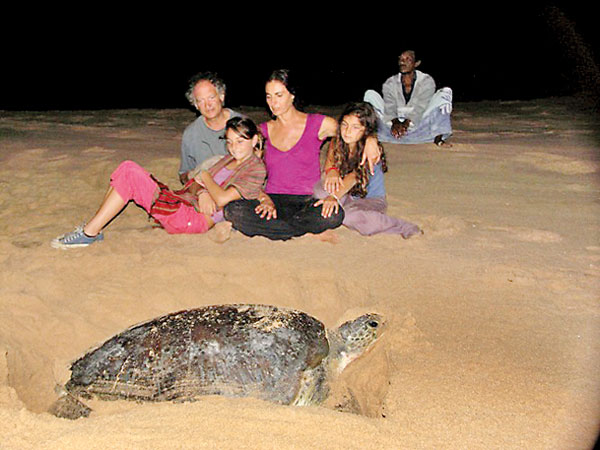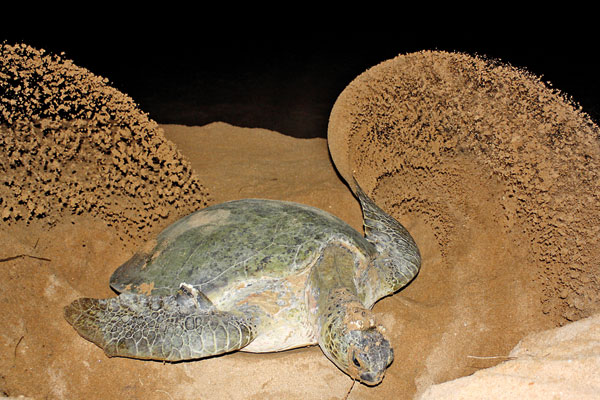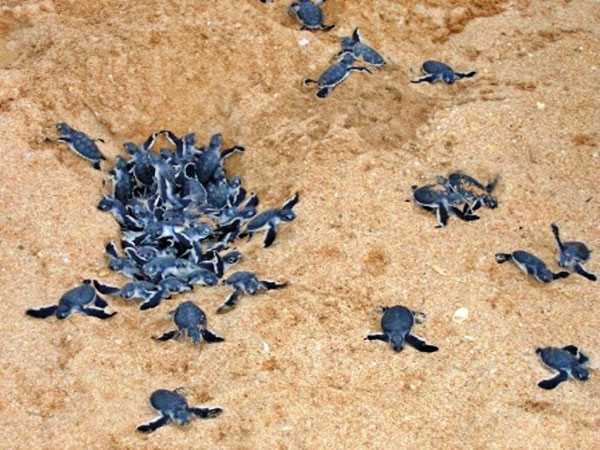‘Turtle Watching’ for Compensating the Local Fishermen’s Hunger
View(s):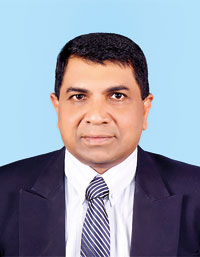
Wasantha Rathnayake's
Marine turtles have been roaming the oceans for about 190 million years, although only seven species are known to be living today. Of these seven, Sri Lanka is host to five species. Turtle Species found in Sri Lanka are Green Turtle (Chelonia mydas), Olive Ridley Turtle (Lepidochelys olivacea), Leatherback Turtle (Dermochelys coriacea), Hawksbill Turtle (Eretmochelys imbricata) and Loggerhead Turtle (Caretta caretta). These turtles regularly nest on sandy beaches that stretch across Induruwa to Yala on the southwestern coast, and, Kandakuliya in Puttalam district, on the southeastern coast.
Most sea turtles migrate between foraging and nesting grounds, and seasonally to warmer waters. Often these migrations take them hundreds and even thousands of miles.
With satellite telemetry, scientists can track the movements of sea turtles between areas and even across entire oceans. Therefore, they can be called ‘marine ambassadors’.
The sea turtle is an important key stone species, significant for maintaining marine ecological balance and for monitoring environmental changes. For humans, turtles offer an additional benefit in the form of wildlife recreational value.
Biodiversity conservation and preservation of animal species requires protection of individual species as well as their habitats. Conservation is not easy because it can be costly to different stakeholders.
Nonetheless, understanding and measuring the tangible costs of conservation, is relatively straight-forward. What is more challenging is the estimation of benefits from endangered species conservation, particularly benefits such as ecological balance, nutrient cycling, etc. that are not traded in markets. Yet, in order to ensure that any species protection programme is successful, it is important to identify costs relative to economic benefits.
In this context, this study focuses on estimating the benefits of conserving the endangered marine turtles of Sri Lanka. Since 1979, marine turtles as well as products made from turtle body parts have been fully protected under Sri Lanka’s Fauna and Flora Protection Ordinance, with anyone found guilty of violation receiving a jail sentence in addition to a fine. 2 Further, Sri Lanka is signatory to CITES (Convention on International Trade in Endangered Species), which prohibits member nations from exporting or importing turtles or any products from turtle body parts.
Yet, because local Sri Lankans are dependent on turtles to meet livelihood needs, turtle conservation is difficult. For some low-income families of the fisher community, turtle meat, shells and eggs constitute their only sources of income, with members of the community either consuming or selling turtle meat and eggs. Eggs are often sold to illegal turtle hatcheries and where turtles become over aged.
According to the scholars, for sea turtles, hatcheries are among the most commonly employed management tools throughout the world. In some cases, hatchlings are maintained in hatcheries/captivity for a period of time before being released into the sea because of human activities such as release programmes.
However, the existing literature showed that the dispersal distance from shore by hatchlings decreases with age and the possibility of experiencing the original migration route becomes low when release is delayed. Thus, in cases their chance of survival decreases, and increases the chances to be caught by the predators.
Rekawa sanctuary on the southern tip of Sri Lanka is the prime turtle nesting habitat in the country. Thousands of turtles flock to Rekawa beach every year to lay their eggs and hatch their young ones come out from the hatched eggs.
The Department of Wildlife Conservation (DWC) has declared this beach a sanctuary in order to facilitate this process of birth and growth. In addition, non-governmental organisations such as the “Turtle Conservation Project” (TCP) have started in situ conservation programmes in the area.
Further, tourism related to turtle-watching is growing in Rekawa. Yet, there are relatively few incentives for villagers, who depend on egg collection and flesh consumption, to participate in conservation. This makes Rekawa an interesting and important region for examining possibilities for conservation through the use of economic incentives in turtle tourism.
Under the study conducted by our team applying the contingent valuation method, the estimated mean WTP values per person per visit for local visitors were Rs. 93 and Rs.143 for Scenarios 1 and 2 respectively, while the mean WTP values for foreign visitors were USD 15 and USD 19 for Scenarios 1 and 2 respectively. Scenario 1 sought to ascertain visitor preferences if visitor services were improved, while Scenario 2 focused on both visitor services and potential conservation initiatives.
These results indicate that the majority (63%) of visitors were willing to pay an entrance fee, which would go towards protecting turtles and improving visitor facilities at Rekawa.
The study recommends the following policy directions that would help in both turtle conservation and the provision of economic incentives for the local community: (i) streamlining and promoting ‘turtle watching’ at Rekawa; (ii) introducing a new fee structure for turtle watching; (iii) proposing a proper incentive/compensation scheme for the local community to get involved in turtle conservation; (iv) establishing a village-level welfare fund using a percentage of the gate collection to improve the basic infrastructure facilities in Rekawa village that would benefit the entire community, thus providing an incentive for everyone in the community to support the initiative. Therefore, the policy makers would be able to get the local community involved in turtle conservation through ‘turtle watching’ tourism.
Before the COVID 19 pandemic situation in Sri Lanka, Rekawa received around 100 foreign visitors during the turtle nesting season. Foreign tourists were charged Rs. 1000 and local tourist were not charged or charged a low amount as a guide fee. According to the discussions had with local community, hoteliers, travel agents, three-wheel drivers, local vendors, handicraft makers, boutique and shop owners at least 250-300 families directly and indirectly depend on ‘turtle watching’ at Rekawa. Among them 20 fishing families directly involve in ‘turtle tourism’ as nature guides.
Biography
Prof. Wasantha Rathnayake is a distinguished Professor in Environmental Management attached to the Faculty of Management Studies, Sabaragamuwa University of Sri Lanka. Prof. Rathnayake has made a great contribution towards the conservation and management of wildlife and natural resources in Sri Lanka covering the areas of strategic planning, policy formulation and protected area management.
He served as a Deputy Director at Department of Wildlife Conservation before joined the University system. He served more than five years as the Focal Point (representative) of Sri Lanka for Ramsar Convention and Indian Ocean South East Asia Memorandum of Understanding for Turtle Conservation (IOSEA). Prof. Wasantha Rathnayake is an outstanding researcher, and he has published more than 80 research articles, book chapters, conference papers and abstracts, including articles indexed in Science citation index and social science index and refereed journals.
The most important thing is that his research findings are not only important for academic purposes but also very useful for the national development in Sri Lanka.
- Prof. Wasantha Rathnayake
Professor in Environmental Management
